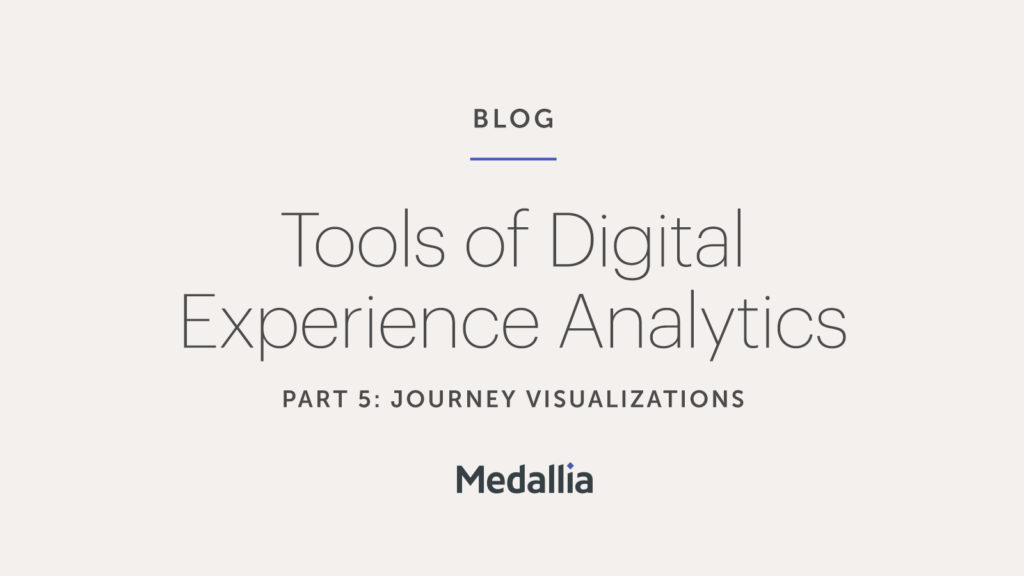As more customers favor websites and apps, improving the digital experience has become business critical. With digital feedback and digital experience analytics, brands can increase customer loyalty, engagement, and satisfaction by capturing online signals and behavioral data.
With a digital-first mentality among shoppers that’s here to stay, websites and apps are quickly taking over as the face of nearly every brand. With customer expectations seemingly rising with every visit, improving the digital experience is becoming business critical. And if brands don’t make it a priority, customers will notice:
- 67% of customers say poor web experiences hurt their opinion of a brand
- 88% of customers are less likely to visit a website again after one bad experience
- 67% of customers claim unpleasant experiences as a reason for churn
Now, brands can’t afford to ignore, miss, or mistake customer signals on websites and apps –– or your first impression could be your last. To truly get into the minds of every customer and prioritize improving digital experience, brands must utilize digital feedback and digital experience analytics. Whether on-site or in-app, digital feedback and digital experience analytics help make sense of every customer engagement and behavior. They can provide insights into every customer, whether they’re vocal or not. But to maximize insights from both together, it takes a thorough understanding of the use cases for each and how they complement each other.
Collect digital feedback to empower customers who have something to say
With customers gravitating toward websites and apps, the personal touch of in-person retail environments is getting lost in many cases. In-store staff can’t check in with customers to monitor experiences and ensure those journeys unfold without a problem. While that human-to-human engagement is lost online, digital feedback offers a way to replicate it.
Digital feedback refers to the voice-of-customer data captured on websites and apps. While you have customers on site or in app, it’s just as crucial to engage them in the moment as a store manager or associate might in person. Digital feedback enables this via two primary ways:
- Digital surveys can be used to engage customers in real time and gauge experience quality during and after they visit your website or app. But it’s not enough to simply send a survey at random or use the same generic survey for everyone –– you need to tailor it to the customer and moment. With pulse surveys, you can check in and collect customer feedback in key moments, whether it’s on specific pages like at checkout, on account dashboards or after interactions like clicking a specific button. Meanwhile, transactional surveys work best to gauge experience quality after an interaction, like making a purchase on a website or downloading and signing up for an app.
- Chatbots can become your website or app’s virtual customer assistant –– just like an online store associate. Chatbots have become a scalable way to offer human-like automated support to customers when they run into trouble. Between personalized suggestions, answers to the most frequently asked questions, and the ability to involve a customer agent when necessary, chatbots can be on-site and in-app heroes. With logs of every customer message and chatbot interaction, chatbots provide indirect customer feedback that can reveal common friction points or customer interests with every engagement.
Use digital experience analytics to give silent customers a voice
As websites and apps welcome millions to billions of customers, it’s nearly impossible to capture digital feedback from every single session. Customers not sharing feedback doesn’t mean they aren’t telling you something about their experience. In fact, the digital body language of those customers can reveal just as much about their experience as direct feedback –– and digital experience analytics uncovers those insights.
Digital experience analytics refers to sophisticated technology that helps brands measure, quantify, and improve customer experiences on websites or apps. Automatically measuring every user behavior and interaction, digital experience analytics can expose exactly what’s happening throughout the online customer journey and help pinpoint experience issues. This happens through a few key functionalities:
- Digital experience scoring with behavior detection tracks every interaction and quantifies every experience with a single score, typically ranging from 1 to 10. It’s an effective metric for measuring and benchmarking experience quality on websites and apps without the need for extensive data mapping.
- Heatmaps display aggregated on-page user behaviors and interactions with colorful visualizations, which work well for spotting patterns across pages. Heatmaps can include scroll, attention, dot/click, attribution, behavior, and other insights.
- Session replay provides anonymized recordings of every user session to display exactly how individual journeys and behaviors unfold for in-depth investigations. More advanced session replays automatically identify the most insightful sessions to watch, reducing the time needed to dig into issues.
- Form analytics measures the experiences and outcomes on any form-based submission page like account sign-ups, checkout screens, and demo requests. This can help ensure conversion-centric user journeys end in success.
On top of those core functionalities, digital experience analytics also offer capabilities like experience issue prioritization, journey analysis and visualizations, extensive segmentation, plus crucial integrations with other technology.
Complement digital feedback with digital experience analytics
While both digital feedback and digital experience analytics work well on their own, they’re more powerful working together. By blending voice-of-customer data with behavioral data, you can gain a complete view of every digital experience. As a result, insights become much more actionable, helping uncover clear-cut opportunities to improve the digital experience.
The way you utilize these solutions in unison depends on the use case. Here are two primary ways to leverage them together in real-life examples:
- Feedback loops inform analytics-based investigations. For instance, pulse survey feedback may reveal friction causing dissatisfaction and abandonment during in-app checkout processes. With digital feedback surfacing those issues, that’s where digital experience analytics can come into play. Using heatmaps and session replay to investigate the point-of-sale screens, issues with layout could be pinpointed and then easily optimized. Finally, a digital experience score can be used to benchmark and monitor experience quality at checkout moving forward.
- Digital experience analytics triggers direct feedback loop engagements. For example, behavior detection and form analytics within digital experience analytics may reveal sessions with erratic mouse movements and submission errors on desktop sign-up forms. With a bottleneck forming, a chatbot can be triggered to automatically step in at this page. Collecting feedback related to form submission issues, the chatbot can involve customer agents when necessary and escalate issues to the right teams for improvements on the backend.
Without one or the other, digital experience data can be hard to act on with any confidence. But by combining digital feedback and digital experience analytics, brands can see the full digital picture, making it easy to understand, react to, and improve the online customer experience.
Curious how your digital strategy compares to other businesses? Get your copy of The State of Digital Experience and Conversion in 2021 for a closer look at how your peers approach customer experience on websites and apps.







